Auto Accident
Can You File a Lawsuit for Defective Mechanic Work?
| March 8th, 2021
If you trusted a mechanic to fix your vehicle only to get it back with the same or new problems, you’re likely wondering if the harm they’ve done to it opens them up to liability, especially if you got into an accident because of that faulty repair job. This happens more often than you might suspect, and there’s a clear answer to your question.
You can sue a mechanic if they were negligent in repairing or servicing your vehicle and that negligence resulted in damage to you or your vehicle. Of course, this means proving that the mechanic failed to do their job with a reasonable standard of care.
Proving Negligence on the Part of a Mechanic
It’s important to show a direct causation of the mechanic’s faulty work to the damages you experienced. In other words, it’s not enough to say that the mechanic worked on your vehicle and then you were involved in a crash. You must demonstrate that the mechanic’s work was the direct cause of your crash, injuries, or property damage.
Attorneys representing clients filing lawsuits typically have many potential ways to prove this. For example, they might have a crash expert or another reputable mechanic examine the vehicle, along with the circumstances of the crash, and connect the dots needed to prove the mechanic’s failure to repair or service your vehicle with a reasonable standard of care caused the crash.
Remember that the intentions of the mechanic are irrelevant to the case you’re making when seeking compensation for your damages. Personal injury lawsuits aren’t seeking to prove that the allegedly at-fault party (the defendant) deliberately meant to impair your vehicle’s performance or to cause you harm. You’re simply asserting that the mechanic made a mistake or acted carelessly, and that those actions resulted in your injuries.
How Mechanics Get It Wrong
Mechanics can make any number of mistakes when working on a vehicle. Careless actions by a mechanic can include:
- Failure to fix an existing problem
- Introducing another vehicular problem while repairing the original one
- Using the wrong part on a vehicle
- Failing to properly reassemble vehicle parts after a repair
These are just a few examples of auto repair negligence. There are many scenarios that could make a mechanic liable for the damages suffered by an injury victim.
Considerations After Possible Auto Repair Negligence
If you’ve been injured in a car accident, and you suspect that a mechanic’s negligence is responsible, remember that preserving the evidence will be key to proving your case. Don’t attempt to fix your vehicle without first consulting an attorney, so they can document the condition of your vehicle at the time of the crash.
Make sure you seek medical treatment as soon as possible after your injury occurs. Personal injury lawsuits are only successful when clear damages have been suffered by the person filing the suit. If you don’t establish that you’ve suffered injuries, you’ll have no damages on which to base your claim.
Contacting an attorney as soon as possible after your crash will help ensure that you do what’s needed to build a solid case while also helping you avoid common pitfalls people encounter when filing lawsuits.
Need Legal Help for an Auto Repair Negligence Case? Get Berg!
At Berg Injury Lawyers, we have years of experience representing injury victims throughout Northern California. To schedule a free consultation, contact our California car accident lawyers today.
Intersection Crash Statistics EVERY California Driver Should Read
| October 26th, 2020
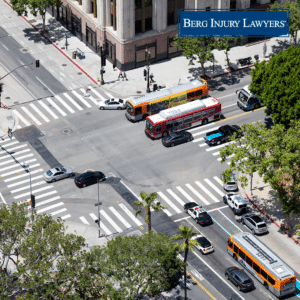 Knowing the dangers you face every day on California’s roads can make you a safer, more conscientious driver. It might surprise you to learn that one of the most dangerous and common dangers is something you probably encounter every day: intersections.
Intersections, both those with traffic signals and stop signs, present unique dangers to motorists. Though most people rarely consider these dangers, doing so can help ensure drivers know how to identify and avoid risks.
The following statistics illustrate just how dangerous intersections are.
Knowing the dangers you face every day on California’s roads can make you a safer, more conscientious driver. It might surprise you to learn that one of the most dangerous and common dangers is something you probably encounter every day: intersections.
Intersections, both those with traffic signals and stop signs, present unique dangers to motorists. Though most people rarely consider these dangers, doing so can help ensure drivers know how to identify and avoid risks.
The following statistics illustrate just how dangerous intersections are.
National Intersection-Related Crash Statistics
- About 40% of crashes in the U.S. are intersection-related.
- Intersection-related crash deaths account for more than 20% of all traffic fatalities in the U.S. every year.
- Around 96% of intersection-related crashes had contributing factors related to driver behavior.
- Nearly one-fifth of intersection-related fatalities involve motorcycles.
- Around 41% of pedestrian collisions occur at roadway intersections.
- Each year, an average of around 31% of intersection-related deaths occur at intersections controlled by traffic signals, and around 38% occur at intersections with stop signs.
Annual Intersection Crash Deaths by California County
In California, the most heavily populated counties have the highest intersection-related crash deaths. Here is the average number of crash deaths involving intersections for 10 of the most populous counties in California:- Los Angeles County has an average of 259 intersection-related crash deaths each year.
- San Diego County has an average of 2 intersection-related crash deaths each year.
- Orange County has an average of 4 intersection-related crash deaths each year.
- Riverside County has an average of 4 intersection-related crash deaths each year.
- San Bernardino County has an average of 6 intersection-related crash deaths each year.
- Santa Clara County has an average of 6 intersection-related crash deaths each year.
- Alameda County has an average of 6 intersection-related crash deaths each year.
- Sacramento County has an average of 38 intersection-related crash deaths each year.
- Contra Costa County has an average of 6 intersection-related crash deaths each year.
- Fresno County has an average of 8 intersection-related crash deaths each year.
Why These Numbers Matter
Intersection crashes are common and deadly. For some of our most vulnerable road users, including motorcyclists and pedestrians, they’re even more lethal. The more drivers understand how important safety is when passing through intersections, the more we can expect these numbers to improve.Intersection Safety Tips
- Never assume that cross-traffic won’t be an issue when your light is green. Many intersection crashes occur when a driver runs a red light.
- Never assume a pedestrian sees you coming. Always yield to pedestrians and drive slowly in heavily walked areas.
- When turning left, remember that oncoming motorcycles might be traveling faster than they appear.
- If turning right at a red light, be sure the vehicle in front of you turns safely before you accelerate. This will help you avoid rear-end collisions.
- Always come to a complete stop at stop signs, and make sure you wait your turn at four-way stops.
If You Need Help, Contact Berg Injury Lawyers
If you or a loved one is injured by a negligent driver, whether it’s at an intersection or any other stretch of road, the California car accident attorneys at Berg Injury Lawyers are here to help. Contact our team today to schedule a free, no-obligation consultation.California Implements Daytime Headlight Law On Highway 99 Stretch
| September 30th, 2020
Running daytime headlights is a safety technique that has been utilized by motorcycles for years to make themselves more visible to other vehicles. Studies have shown that the use of headlights during the day can reduce the chances of a vehicle being in an accident by as much as 23%. In California, drivers are legally required on certain stretches of highway to run headlights during the day to reduce the number of crashes.Daylight Headlight Section on Highway 99
All vehicles on the 29-mile length of Highway 99, between Chico and Red Bluff, California, are required to have their headlights on at all times. When the mandate was first given, officials said the area was notoriously plagued by a high number of motor vehicle accidents along the narrow, winding road. Officials worked for more than 18-months to have the initiative passed. Caltrans workers then began installing daytime headlight warning signs along the highway to remind drivers of the new measure.Did the Daylight Headlight Section Actually Work?
Yes. In the seven years following the implementation of the daylight headlight section, the results were impressive. On the Tehama portion of this daylight headlight section, there were:- 2% fewer daytime crashes resulting in property damage.
- 8% fewer crashes involving injuries.
- No fatal crashes on this stretch from 2014-2017.
Benefits of Daytime Headlights
Studies show varied results of leaving headlights on during the day, but many suggest that they do reduce the risks of being involved in crashes. That’s true for both standard headlights turned on during the day and daytime running lights, which are designed solely to be kept on during daylight. Keeping headlights on during the day is also beneficial when visibility is low due to inclement weather.California’s Headlight Laws
California’s headlight laws state that drivers in California are required to use headlights:- In the dark.
- When continuous use of windshield wipers is needed.
- When visibility is less than 1,000 feet.
We’re Advocates of Daylight Headlight Usage
The number of California car accidents could be significantly reduced if all drivers adopted the use of daytime running headlights. That’s why the San Francisco personal injury lawyers with Berg Injury Lawyers ask that all drivers always turn on their headlights, regardless of the time of day, before driving anywhere. If you’d like to learn more about California’s road and vehicle laws, here are some more resources you might enjoy: This story was originally published in May 2012. It was updated in October 2020.When Should You Report a Car Accident in California?
| September 14th, 2020
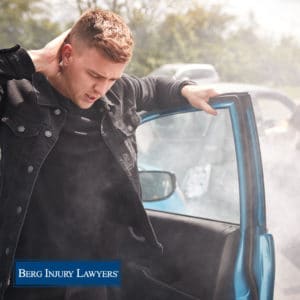 After a crash, the last thing most people want to do is call the police and wait until they arrive on the scene to file a report. But it’s important to know when you’re required to report a car accident in California.
In certain circumstances, a failure to do so won’t just make it harder to establish fault if you decide to file a compensation claim; it could even result in criminal charges.
So, when is it necessary to report a crash? Here’s what you need to know.
After a crash, the last thing most people want to do is call the police and wait until they arrive on the scene to file a report. But it’s important to know when you’re required to report a car accident in California.
In certain circumstances, a failure to do so won’t just make it harder to establish fault if you decide to file a compensation claim; it could even result in criminal charges.
So, when is it necessary to report a crash? Here’s what you need to know.
It’s a Requirement to Report a Vehicle Crash in California If…
- Property damage exceeds $1000.
- Someone was injured in the crash.
- Someone was killed in the crash.
Making the Case for Always Reporting a Crash
Now that we know California’s laws about reporting a car accident, let’s go a step further. From the perspective a vehicle accident attorney, it’s best practice to always report a crash. First, though it’s possible to file an insurance claim without a police report, proving that you weren’t at fault for the crash is far more difficult without that report. Fault matters when it comes to insurance claims, and you’ll want to be sure to have a police report that reflects the other driver’s role in causing the accident. Second, it’s incredibly difficult for someone involved in a crash to know the monetary value of damage their vehicle has sustained. A small “ding” could be just the beginning of the damage to the vehicle. Assume that any damage will be more costly to repair than it initially appears. Third, just like it’s hard to know how much damage a vehicle has sustained, it’s equally if not more difficult to know how injured a person is after an accident. Crash-related injuries are often far worse than they initially appear; the injured person usually has enough adrenaline pumping through their body from the shock of the crash to mask symptoms. If there’s the slightest indication that you’ve been hurt, report the accident and seek medical treatment as soon as possible.What Happens If You Don’t Report a Crash in California?
By failing to report a car accident that involves significant property damage, you could have your license suspended by the DMV. If you were involved in a crash where someone else was seriously injured and you leave the scene before police arrive, you could face criminal charges, including imprisonment of up to 3 years, and up $10,000 in fines for a felony hit-and-run.Don’t Take the Chance—Report the Crash
When you don’t report an accident in California, you accept unnecessary risks. What if someone is more injured than they appear at the scene of the crash? What if the amount of property damage is far greater than it seems right after the accident? There are too many factors at play to know when it’s okay not to report the crash. So, we suggest playing it safe and calling the authorities as soon as the accident happens.If You Need Help, Contact Berg Injury Lawyers
The California car accident attorneys at Berg Injury Lawyers have years of experience handling vehicle crash claims involving serious injuries. If you need help, contact us today to schedule a free consultation.What Is the Safest Time of Day to Ride a Bicycle in California?
| August 17th, 2020
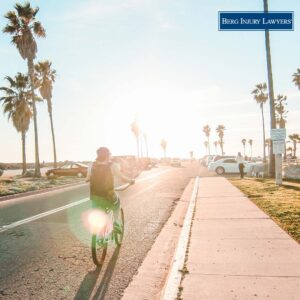 California is one of the three most dangerous states in the U.S. for cyclists, and the problem is only getting worse. Between 2016 to 2018, more cyclists died in California traffic accidents than in any three-year period since the mid-1990s.
Because of the significant danger, cyclists in California should also use caution when riding on busy roads, and knowing the safest times to ride could help keep more cyclists safe.
California is one of the three most dangerous states in the U.S. for cyclists, and the problem is only getting worse. Between 2016 to 2018, more cyclists died in California traffic accidents than in any three-year period since the mid-1990s.
Because of the significant danger, cyclists in California should also use caution when riding on busy roads, and knowing the safest times to ride could help keep more cyclists safe.
When Are California Cyclists Most at Risk for a Crash?
Based on statistics from 2017, the latest year for which finalized data is available, 21% of all bicyclist crash deaths happen between 6 p.m. and 9 p.m. During this time of day, visibility is lower, and traffic is still relatively high, making it particularly dangerous for cyclists. The next most dangerous times of day is 9 p.m. to midnight (18% of all bicycle crash deaths) followed by 3 p.m. to 6 p.m. (15% of all crash deaths). Other factors also increase the chances of bicycle accidents. For example, 75% of all bicycle crash fatalities occur in urban areas. Alcohol use contributes to more than one-third of all bicycle crash deaths, and intoxication by drivers and cyclists can both contribute to the problem.When Are California Cyclists Safest on Our Roads?
Now that we know the most dangerous times of the day, we can determine that cyclists are safest when visibility is high, but less traffic is on the road. So, ideally, cyclists should travel in daylight during non-rush-hour traffic. Unfortunately, riding only during the safest times of the day is simply not possible for many cyclists in California. To avoid increasing their risks of being involved in a crash, cyclists can take several other precautions.How Cyclists Can Stay Safe on California’s Roads
If cyclists can’t avoid riding during times of heavy traffic when driver visibility is low, they can make sure they’re equipped with the proper safety gear. The more visible they are to drivers, the easier it will be for those motorists to see them. Cyclists can wear brightly colored or reflective clothing when riding in the dark. They should have a headlight, a red light, or a reflector on the rear of their bikes, and a white or yellow reflector on each pedal. To learn more about California’s legal requirements regarding safety equipment, check out our guide to California’s bicycle laws.The Responsibilities of Drivers Toward Cyclists
If we want to make California safer for cyclists, drivers must make sure they’re following the law and safely sharing roads. This means:- Never driving in designated bike lanes.
- Yielding to cyclists the same way you would for any other motorist.
- Looking out for cyclists when turning at intersections or right on red lights.
- Giving cyclists plenty of room on our roads.
If You Need Legal Help, Contact Berg Injury Lawyers
Our Northern California bicycle accident attorneys have helped many injured cyclists get the compensation they’re entitled to. These cases typically involve crashes with severe injuries, and it’s important for injured cyclists to know that they might deserve more payment than the insurance company first offers them. If you’d like to speak to our legal team about your case, contact us today for a free consultation.California’s Bicycle Laws Explained
| August 3rd, 2020
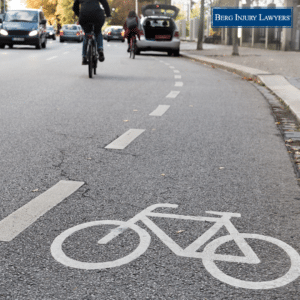 Understanding California’s bicycle laws is essential for every cyclist in our state. From helmet laws to bicycle lane laws, California is very specific about what’s expected of cyclists.
To begin our comprehensive list of California’s bicycle laws, let’s start with the required equipment.
Understanding California’s bicycle laws is essential for every cyclist in our state. From helmet laws to bicycle lane laws, California is very specific about what’s expected of cyclists.
To begin our comprehensive list of California’s bicycle laws, let’s start with the required equipment.
Bicycle Helmet Laws in California
California law is clear about the helmet requirements for riders under the age of 18. Parents are responsible for ensuring that minors have proper equipment when they ride.Cyclists Under the Age of 18
No cyclist under the age of 18 should ride a bike without a helmet. That helmet must be properly fitted and fastened. The helmet must meet the standards of either the American Society for Testing and Materials (ASTM) or the United States Consumer Product Safety Commission (CPSC). This also applies to any bicycle passenger in a restraining seat attached to the bicycle or in a trailer towed by the bicycle. Helmets must be clearly labeled by the manufacturer to display compliance with the safety standards of the ASTM or the CPSC.Cyclists Age 18 and Older
There are no state requirements for cyclists age 18 and older. But, you should always wear a helmet when riding a bicycle for safety purposes. Wearing a bicycle helmet reduces your risk of suffering a head injury by more than 50%. When buying a helmet, make sure it is in keeping with CPSC standards.More Laws Regarding Bicycle Equipment and Size
In addition to helmet requirements, cyclists in California must ensure their bikes also meet certain requirements:- Cyclists can’t operate a bike on a roadway unless the bicycle has a brake that will enable the cyclist “to make one braked wheel skid on dry, level, clean pavement,” which is the legal standard for an effective bicycle brake.
- A bike’s handlebars should never be positioned so that the cyclist must elevate their hands above shoulder level to steer.
- A cyclist shouldn’t ride a bike so big that its size prevents them from “safely stopping the bicycle, supporting it in an upright position with at least one foot on the ground, and restarting it in a safe manner.”
- A light that illuminates the road in front of the cyclist and is visible from 300 feet in front and from the sides of the bicycle. This light can be attached to the bike or the bicyclist.
- Either a red reflector, solid red lights, or flashing red lights visible from 500 feet to the rear of the bike.
- A white or yellow reflector on each pedal, shoe, or ankle visible from 200 feet to the front or rear of the bicycle.
- A white or yellow reflector on each side forward of the center of the bicycle, and a white or red reflector on each side to the rear of the center of the bicycle. Bicycles that are equipped with reflective front and rear tires are exempt.
- All reflectors or reflective tires should meet state requirements.
Rights and Responsibilities of Cyclists in California
California law states that bicyclists have the same rights and responsibilities as motorists. This means that the same rules (adhering to traffic signs and signals, watching out for pedestrians, signaling when turning) apply to bicyclists as they do for car drivers. It’s illegal for cyclists to ride a bike while they’re under the influence of drugs or alcohol. Bicyclists traveling at speeds slower than the normal flow of traffic must ride as close as possible to the right-hand curb or edge of the roadway UNLESS:- They are passing another bike or vehicle.
- They are turning left.
- Conditions of the road make traveling on the right-hand side dangerous.
- They are approaching a place where a right turn is authorized.
- They are traveling on a one-way street with two lanes, in which case riding as close to the left-hand side of the road as possible is allowed.
- It is unsafe to do so,
- You’re turning, or
- You need to pass another cyclist.
Don’t Attach Your Bike to Other Vehicles to Hitch a Ride
Bicyclists, along with every other vehicle type, are forbidden from attaching their bike to another vehicle for travel purposes. In other words, you can’t hitch a ride with other vehicles. This obviously doesn’t apply to cyclists who are simply loading their bikes on vehicles for hauling purposes.Ride Only on the Designated Seat
California law states that cyclists must ride on the designated seats of their bikes. This also applies to passengers. Unless a bike is equipped to seat two people, it should only be ridden by one person. In other words, no sitting on handlebars or standing on pegs.Don’t Haul Items That Restrict Your Ability to Safely Operate the Bike
When carrying items attached to a bicycle, cyclists must be able to keep at least one hand on the handlebars. So, no hauling items that restrict your ability to control the bike.California Laws Concerning Parking or Storing Your Bicycle
Cyclists shouldn’t leave their bikes lying on their side on sidewalks. They shouldn’t park bicycles on sidewalks in any position that obstructs the path of pedestrian traffic. Local authorities can prohibit bicycle parking in designated areas of the public highway, but it must place signs in these areas that clearly indicate these restrictions.What About Motorized Bicycles?
Motorized bicyclists also have many of the same rights and responsibilities of people riding or using other vehicles, though these vehicles are considered closer to motorcycles than bikes. For example, a motorized bicyclist can’t travel on a bicycle path or trail, bikeway, bicycle lane, equestrian trail, or hiking or recreational trail, unless it is within or adjacent to a roadway. Local ordinances might allow exceptions, but it’s best to reference those laws to make sure you’re following them.Don’t Loiter or Obstruct Bike Lanes
California law requires other road users (drivers, pedestrians, etc.) to keep bicycle lanes unobstructed. This means that people shouldn’t loiter, obstruct, or drive motorized vehicles in designated bicycle lanes.Cities Can Mandate Their Own Bicycle Laws, Too
These are just California’s bicycle laws, but each city has the right to impose stricter laws regarding bicycle use on roadways. Reference your city’s specific laws to see if any additional laws apply to bicyclists.Vehicle Drivers Have Responsibilities Toward Cyclists
Whether it’s staying out of bike lanes or giving cyclists plenty of space on our roads, motorists have an obligation to keep bicyclists safe. When they fail to follow the law, they can be held responsible for the harm they cause others. If you’re injured by a negligent driver in California, the law gives you the opportunity to hold that driver responsible for the injury-related costs you face. Through a personal injury claim, you can get compensation for medical bills, lost income, property damage, and pain and suffering.If You Need Legal Help, Contact Berg Injury Lawyers
At Berg Injury Lawyers, our California bicycle accident attorneys help injured cyclists get the compensation they’re entitled to by law. If you or a loved one has been injured by a negligent driver, contact our team to schedule a free consultation.Driving Under the Influence of Marijuana—What’s a Driver’s Liability?
| April 20th, 2020
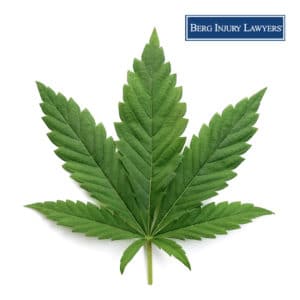 Marijuana is detected in the bloodstream of drivers who have been involved in car crashes more frequently than any other drug. Some research indicates that drivers with marijuana in their system are twice as likely to be responsible for causing crashes than a typical driver.
Whether you believe marijuana impairs a driver’s ability to safely operate a vehicle, or you think it has no impact at all, one thing is indisputable: driving with THC in your system has legal consequences.
Marijuana is detected in the bloodstream of drivers who have been involved in car crashes more frequently than any other drug. Some research indicates that drivers with marijuana in their system are twice as likely to be responsible for causing crashes than a typical driver.
Whether you believe marijuana impairs a driver’s ability to safely operate a vehicle, or you think it has no impact at all, one thing is indisputable: driving with THC in your system has legal consequences.
California Considers a High Driver an Impaired Driver
Though recreational use of marijuana is legal in California, it isn’t legal if you’re driving. The consequences of driving while impaired by marijuana can be severe, including a misdemeanor charge, probation, and license suspension. According to the California Highway Patrol, one impaired driving offense can cost a driver up to $13,500 when including insurance price raises, legal fees, missed time at work for court dates, restricted licensing, criminal records, and other related costs.What’s A Person’s Liability for Driving Under the Influence of Marijuana?
An impaired driver is a negligent driver. So, if a driver is under the influence of a mind-altering substance such as marijuana, they should be considered at fault when involved in a collision with another vehicle. However, detecting and proving marijuana impairment isn’t easy (which we’ll get to shortly). Even if a driver’s impairment isn’t detected, their mistakes still make them legally liable for the costs the other driver faces. For example, a stoned driver might rear end another vehicle because their reaction times were impaired. They may not be held accountable for driving impaired if it can’t be proven they were still under the influence of marijuana at the time of the accident, but they can be held responsible for causing the accident.How Does Marijuana Impact a Driver’s Performance?
The National Institute on Drug Abuse said that marijuana greatly affects a user’s judgment, motor coordination, and reaction time. The effects of marijuana vary widely from one user to another, which makes it much more difficult to study than alcohol. That’s because a person’s blood-alcohol content is a consistent indicator of their level of impairment, while the same is not true for marijuana. For example, once a driver’s BAC is double the legal limit, their performance behind the wheel will be severely impacted. Conversely, two people with the same level of THC in their system will be affected in very different ways. However, research shows that marijuana will impact any driver’s performance if they ingest enough of it. Some drivers who are impaired by marijuana are also driving under the influence of alcohol. THC and alcohol compound each other’s effects, so even if a driver’s BAC is lower than the legal limit, they could still be significantly impaired if they’ve also ingested THC.How Do You Know if a Driver Is Impaired by THC?
There’s currently no great way to tell if a driver is impaired by marijuana, and it’s a problem for law enforcement. In some cases, an officer who pulls a reckless driver over might smell marijuana in the vehicle or see physical signs of THC impairment, which could justify a request for blood or urine tests. But even if an officer tests the blood or urine of someone they suspect is impaired, it’s difficult for tests to reveal whether the driver used marijuana minutes, hours, or days before the crash. Though science could offer solutions that give officers a way to detect marijuana use immediately, it will take time for these technologies to be made available to local police. The fact that THC is difficult to detect not only makes policing marijuana-impaired drivers difficult, it also makes it hard for someone who was involved in a crash with a potentially stoned driver to prove it.What to Do If You Suspect the Driver Who Hit You Was High?
First, document the scene of the crash as best as possible. Take pictures of the damage to your vehicle, the license plate of the other driver’s vehicle, and the location of the crash. Call 911 to request an officer, so they can respond to the scene and file a report. If you’ve been injured, seek immediate medical attention. After you speak to the police and get the care you need, call your insurance company to tell them about the crash. Then, call an attorney, so they can remove any doubt you were at fault, and make sure you get a fair offer from the other driver’s insurance company.Need Help? Call Berg Injury Lawyers
If you’re involved in a crash with an impaired driver, you deserve payment for all the costs you face. We help our clients get compensation for medical bills, property damage, lost income, and any other costs they face. Contact our California auto accident attorneys today to schedule a free case review with our team. Let us help you explore all your available legal options.Your Fall Leaves Viewing Guide
| October 9th, 2019
As September gives way to October, we are excited to see the spectacular burst of color found in autumn leaves. But as lovely as the trees on our streets are, there’s nothing quite like seeing an entire forest come to life with brilliant color. If you’ve ever been tempted to hit the road to get a better view of the leaves changing, you’re not alone. Fall foliage is a major tourist attraction across the U.S., beginning in late September and continuing on through November. Areas will often see “peak” color for just a week or two out of the year, making timing very important, but even if you miss peak color, the sight can still be marvelous. If you are considering using up some of those saved vacation days this fall, there’s nothing better than a road trip to take in the amazing forests and scenic highways this country has to offer. We’ve picked some of our favorite locations, depending on where you’d like to go.
Safety Tips for Roadtripping
Road trips can be a lot of fun, but when you are spending many hours a day in the car, there’s a lot that can go wrong, whether it’s running into debris in the road, hitting an animal, or encountering a careless driver. You can’t prepare for everything, but there’s some things you can. Use this checklist to determine what you may need before heading out to see the leaves this year.- Get the right car for the job. Maybe that’s your own car, but maybe it’s not. If you know you are going somewhere with hiking, consider renting a vehicle with four-wheel drive. If you know you are sticking with scenic byways, maybe you’ll want to rent a convertible to better enjoy the sights.
- Get Your Vehicle Inspected. If you are taking your own car, take it to a mechanic a few days beforehand for an inspection. This will find any malfunctioning parts or parts that may be near to malfunctioning before they cause a problem hundreds of miles from home.
- Prepare for a roadside emergency. You should also have a spare tire, a jack, and a jumper kit in your trunk.
- Prepare for all other emergencies. If you get stranded, injured, or something else goes wrong, an emergency kit is good to have on hand. We suggest including items like sunblock, bug spray, bottled water and granola bars, a flashlight with batteries, a phone charger and battery pack, a Swiss Army knife or other multipurpose tool, a first aid kit, and a blanket or towel.
- Carry Cash. Between toll stations, state or national park entry fees, and remote small towns along your route, using your credit card may not always be an option.
- Plan your music ahead of time. Remote areas like state parks may cause you to lose cell phone service, which means streaming may not be possible. Plan ahead and visit the library to get CDs or download your playlists to your MP3 player ahead of time. This also means less time fiddling with the entertainment system and potentially losing control of the car.
- Have a backup map. If you use the GPS on your cell phone, you may lose your turn-by-turn directions if your cell phone signal cuts out.
- Get a good night’s sleep beforehand. Drowsy driving can be as dangerous or more dangerous than driving drunk.
After a Road Trip Accident, Call Berg Injury Lawyers
At Berg Injury Lawyers, we know car accidents. When you’re involved in an accident because another driver was behaving recklessly, it’s more than an inconvenience, it can cause serious disruption to your life! If you or a loved one were injured, whether it was on a road trip or just a trip down the street, we want to help you get compensation for your medical bills, lost wages, and pain and suffering. Contact the California car accident attorneys at Berg Injury Lawyers today. Your consultation is always free, and if you don’t win, you pay nothing.It’s Child Passenger Safety Week
| September 16th, 2019
Car accidents can be scary and stressful, but when a child is the car, they have even more potential to be devastating. The best way to protect your child in an accident is by making sure they are securely buckled into their car seat every time you get in a car, but when kids are growing and seat designs are changing, it can be difficult to know which to use or how to use it. Join us September 15-21 for National Child Passenger Safety Week 2019 by accessing the guide below for key information you need to know to keep your children safe in your vehicle.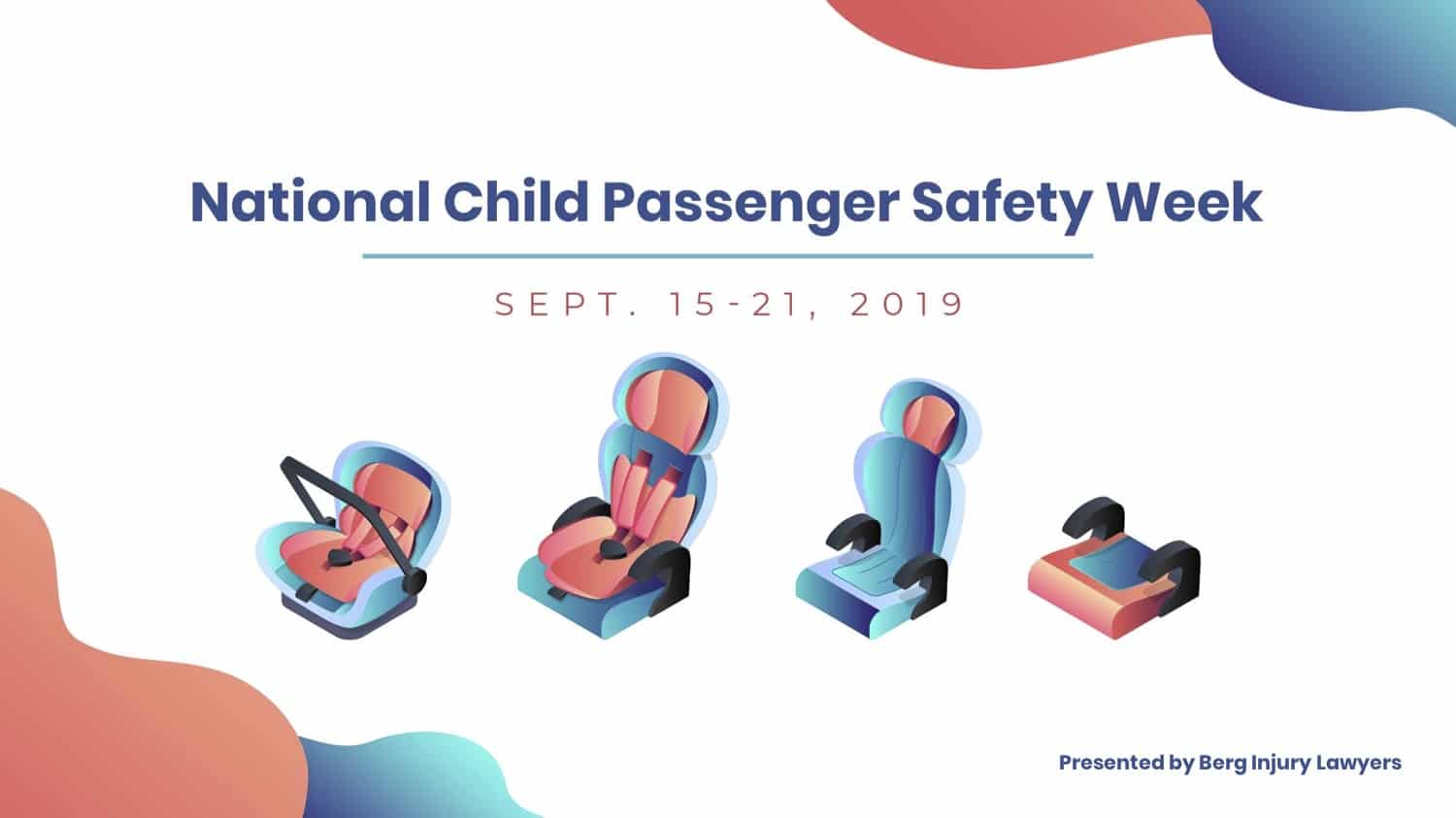
How Music May Affect Your Driving Behavior
| August 7th, 2019
Car accidents occur every day when drivers get distracted by the radio dial or while flipping through a playlist, but is music itself a cause of traffic accidents? Music and driving have been an inseparable pair since radios were first added to vehicles, but now researchers are becoming interested in whether that relationship is helpful or harmful.The Case for Music while Driving
In driving situations when you are locked in traffic, listening to music can boost your mood and reduce your stress levels. In turn, this can reduce aggressive driving and road rage. In highway driving, listening to music has been connected with improved concentration, decreased lane drifting, and more accuracy in matching speed to flow of traffic. It also increases heartrate, making it easier for drivers to stay awake and aware.The Case Against Music while Driving
Loud music, or any music played over 85 decibels (dB), has been shown to reduce reaction time. Likewise, fast music, or any music with more than 120 beats per minute (BPM), may cause overexcitement, and cause a driver to subconsciously speed. When you really love a song, that may be another reason to take it off your road trip playlist. It becomes too easy to become distracted and begin making errors such as forgetting to signal or check blind spots. In studies comparing driving performance when listening to personal music vs music provided by researchers, tailgating also increased when drivers listened to their own music.How to Build Your Playlist
In general, music with a tempo of 60-80 BPM is the safest to drive to, because it mimics the average human heart rate. Most music among today’s hits falls around 100 BPM, but anything over 120 BPM may encourage dangerous driving habits. Based on what we know about the safest and most dangerous tempos, we’ve found five of the most dangerous songs to listen to while driving and five safe alternatives, all pulled from the Billboard Hot 100. Today’s Hits – Top 5 Most Dangerous Songs to Drive To- bad guy by Billie Eilish – 135 BPM
- Talk by Khalid – 136 BPM
- Sucker by Jonas Brothers – 138 BPM
- If I Can’t Have You by Shawn Mendes – 124 BPM
- Sweet But Psycho by Ava Max – 133 BPM
- Old Town Road by Lil Nas X ft. Billy Ray Cyrus – 67 BPM
- Suge by DaBaby – 75 BPM
- Beer Never Broke My Heart by Luke Combs – 77 BPM
- Earfquake by Tyler, The Creator – 80 BPM
- 7 Rings by Ariana Grande – 70 BPM


